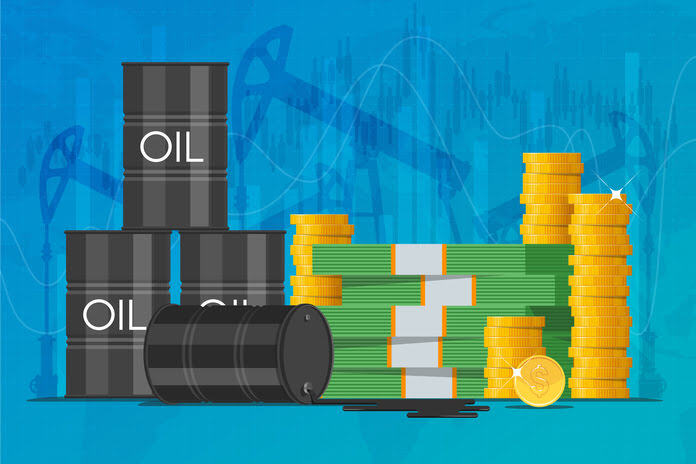While West Texas Intermediate (NYSE:WTI) crude oil plays a vital role in gasoline refining, Brent crude oil, slightly heavier with a higher sulfur content, is essential for distillate processing. As of September 6, ICE Brent crude oil for November delivery was trading at a premium of approximately $3.83 per barrel over NYMEX WTI November crude oil futures.
In contrast, heating oil futures experienced a significant drop, plummeting around 60% from their all-time peak in April 2022 to hit a low of $2.15 per gallon wholesale in May 2023. However, prices have rebounded, surpassing $3 per gallon in early September. The factors that drove prices to record highs in 2022 remain present, raising concerns of a potential explosive rally in heating oil as the oil market enters the fall and winter seasons.
Heating Oil Prices Correct and Rebound
The conflict in Ukraine pushed N.Y. Harbor heating oil futures to an all-time high of $5.2217 in April 2022, marking a remarkable increase from the pandemic-induced low of 58.0 cents in April 2020, the lowest level since March 2002. It went up to a record high in April 2022, which eventually tapered off at over $5 per gallon wholesale. In May 2023, heating oil futures found a bottom at $2.15, down 58.8% from their peak.
Heating oil closely followed the trajectory of crude oil prices, with nearby WTI futures dropping to $63.57 and continuous Brent futures reaching a bottom of $68.20 per barrel in May. Both crude oil and oil products have since experienced bullish trends since the May 2023 lows.
Bullish Trends in Crude Oil and Heating Oil
The October heating oil futures showed a bullish trend since early May 2023, highlighting a 48.7% recovery from $2.2174 to $3.2966 per gallon wholesale by August 25. Prices have remained near the recent high, at approximately $3.14 in early September. Meanwhile, the NYMEX crude oil chart for October delivery depicts a 36.4% rise from $64.58 on May 4 to $88.07 per barrel in early September. Brent crude oil futures for November delivery also climbed 28.6% from $70.88 on May 4 to $91.18 in early September.
Both crude oil benchmarks and distillate price indicators exhibited bullish trends in early September.
Brent’s Significance: OPEC+ Influence on Prices
Brent crude, due to its higher sulfur levels and composition, is the preferred choice for distillate refining and serves as the pricing benchmark for two-thirds of the world’s crude oil supply, originating from Europe, Russia, Africa, and the Middle East. OPEC+ exerts substantial control over the Brent benchmark price through production quotas, which in turn influences distillate prices.
In 2008, heating oil futures hit an all-time high of $4.1586 per gallon, surpassing previous levels. Russia’s involvement in OPEC has led to soaring distillate fuel prices. As of September 2023, the ongoing Ukraine conflict and deteriorating relations between Russia and its supporters continue. Additionally, Saudi Arabia and other OPEC members have shifted their crude oil sales to China and India, bypassing the U.S. dollar, and signaling changes in the petrodollar era. These factors make crude oil susceptible to sudden supply disruptions and price surges.
Chinese Economic Recovery’s Impact
China and India, two of the world’s most populous countries, hold significant influence in the global economy. Recent sluggish economic growth in China led OPEC+ to implement production cuts, citing Chinese economic weakness as a justification. However, the cartel’s primary goal remains to achieve the highest possible prices that balance supply and demand fundamentals, even if it means selling less oil. Tensions with the U.S. and Europe and Russia’s use of energy as an economic weapon also factor into the cartel’s policy decisions.
A resurgence in China’s economic activity could potentially shift the petroleum market’s dynamics, causing prices to surge back toward 2022 levels. Crude oil prices have been trending toward $100 per barrel, and the U.S. Strategic Petroleum Reserve remains at historically low levels, limiting the capacity to stabilize prices as it did in 2022.
Key Technical Levels for NY Harbor Heating Oil Futures
Heating oil futures have consistently formed lower highs since their 2022 peak. However, oil product futures are approaching a level that could mark the end of this bearish trend. On a ten-year analysis, the technical resistance to breaking the downward trend stands at the January 2023 high of $3.58 per gallon, just under 25 cents above the August 2023 continuous contract peak. A move beyond this level could trigger a technical rally, pushing prices back above the $4 per gallon wholesale threshold.
With support from the geopolitical landscape in September 2023, higher heating oil, jet fuel, diesel, and other distillate fuel prices may be on the horizon as the technical trend turns bullish.
Featured Image: Freepik @ skypicsstudio









